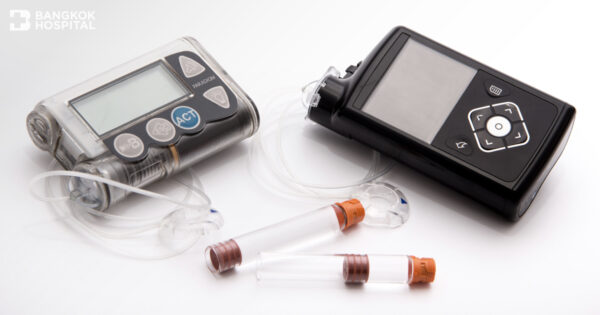

Translated by AI
Benefits of Using an Insulin Pump
Insulin pumps mimic the release of insulin hormone from the pancreas, making insulin levels in the body relatively stable, and upon eating, can immediately increase insulin medication without the need for repeated injections.

Why measure blood sugar levels?

Translated by AI
Advantages of Insulin Pumps Compared to Injections
Advantages of Insulin Pumps Compared to Injections

Translated by AI
Eating Wrongly, Life Stuck with Diabetes
Preventing diabetes by screening for Pre Diabetes is a better way to reduce the occurrence of diabetes and its complications than treatment. People at risk for diabetes are also at a higher risk of developing heart and vascular diseases.

Translated by AI
Women Stay Ahead of Diabetes by Being Informed
Due to the changing lifestyle combined with a selection of sweet tasting menus that are easily available, including bingsu, ice cream, sweet drinks, cake, and much more, are all parts that contribute to the body receiving sugar in quantities exceeding daily needs, leading to the risk of developing diabetes, especially in women.

Translated by AI
Diabetes Patients and Influenza Vaccination
One of the diseases that often comes with winter is influenza, which is a respiratory infection caused by the influenza virus. It can be transmitted through coughing, sneezing, and close contact. Therefore, people with diabetes should get an annual flu vaccine to reduce severe complications from influenza.

Let's Get to know Hemoglobin A1C

Diabetes
Diabetes is a disease in which the body has an abnormal level of blood sugar over an extended period of time. Symptoms may include the need to urinate often, feeling dehydrated, and bouts of hunger.

Translated by AI
Diabetes and Dry Mouth Conditions
Diabetes directly and indirectly affects the function and structure of the salivary glands in producing sufficient saliva in the mouth. Moreover, side effects from medication, high blood sugar, dialysis, dehydration, and nerve system diseases are the main causes of dry mouth in diabetic patients.

Translated by AI
Type 2 Diabetes Patients and the Inspiration to Exercise
For type 2 diabetes patients, in addition to taking medication and controlling their diet, "exercise" is an important part that can improve the condition of the disease, possibly to the point of being able to stop taking diabetes medication. This is because appropriate and regular exercise can help lower blood sugar levels.

Translated by AI
Getting to Know the Insulin Pump
An insulin pump is a device that mimics the function of the pancreas and acts to release insulin into the body, aiming to enhance the effectiveness of controlling blood sugar levels in people with diabetes who need to inject insulin to be as close as possible to non-diabetic individuals.

6 Smart Tips for Diabetic Foot Care in Rainy Season
Diabetes can be dangerous for your feet. Even a small cut can cause serious consequences. Diabetes may cause nerve damages that take away the feeling in your feet.